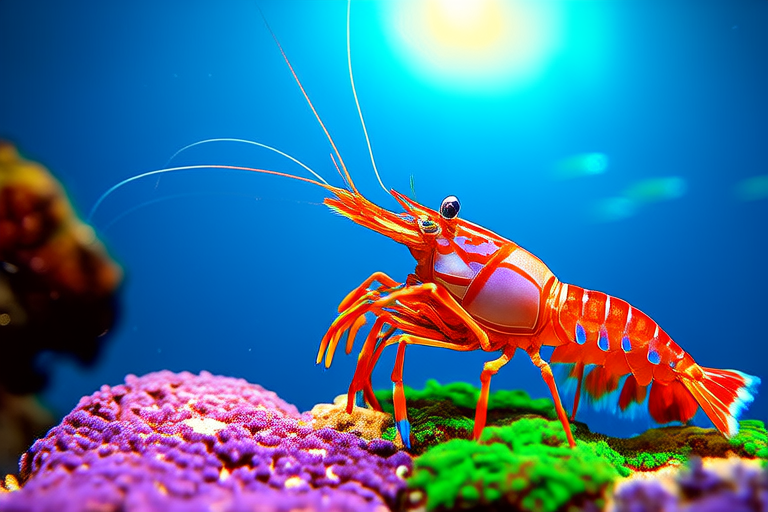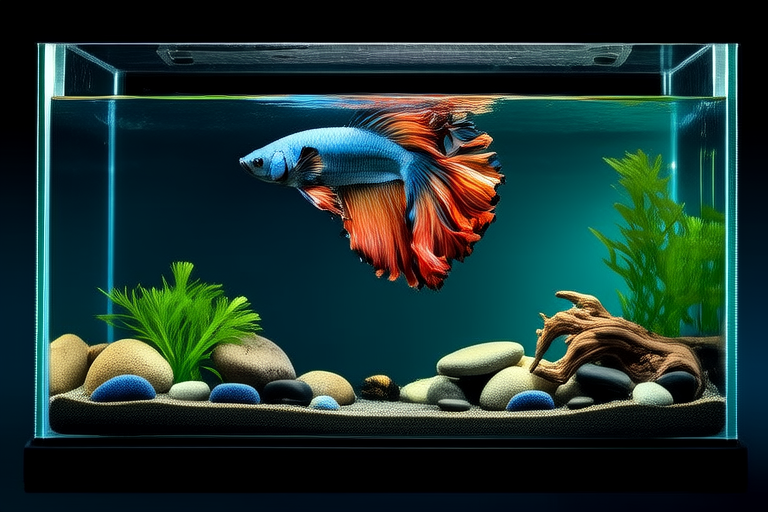
The Secret Lives of Coral Shrimp
When we think of coral reefs, images of vibrant fish, majestic sea turtles, and colorful corals often come to mind. However, there exists a world of small, unassuming creatures that play crucial roles in maintaining the delicate balance of these underwater ecosystems. Among these is the coral shrimp, a tiny but mighty inhabitant of the reef. This article delves into the unique behaviors, hidden habitats, and lesser-known facts about coral shrimp, shedding light on their vital role in reef ecosystems, their unusual feeding habits, methods of communication, and adaptation to changing environments.
Hidden Habitats and Unique Behaviors
Coral shrimp, belonging to the family Hippolytidae, are found in various parts of the world, including the tropical and subtropical waters of the Indo-Pacific region. These shrimp are known for their close association with coral reefs, where they find shelter among the nooks and crannies of coral structures. One of the most fascinating aspects of coral shrimp is their ability to camouflage themselves. They possess a transparent or semi-transparent body, which helps them blend seamlessly into their surroundings. This adaptation allows them to avoid predators while also making it easier to sneak up on unsuspecting prey.
In addition to their physical adaptations, coral shrimp exhibit unique behaviors that enhance their survival in the competitive reef environment. For instance, they have been observed cleaning other marine animals, such as fish, by removing parasites and dead skin. This behavior not only benefits the shrimp by providing a source of food but also strengthens the symbiotic relationship between the shrimp and its host. The fish, in return, receive a cleaner bill of health, reducing the risk of infections and improving their overall well-being.
Unusual Feeding Habits
Coral shrimp are omnivorous, meaning they consume both plant and animal matter. Their diet primarily consists of algae, plankton, and small invertebrates. However, one of the most intriguing aspects of their feeding habits is their ability to scavenge. Coral shrimp are adept at locating and consuming decaying organic material, which can be found in the form of dead organisms or waste products from other marine animals. This scavenging behavior plays a significant role in the nutrient cycling process within the reef ecosystem, helping to maintain the health and productivity of the habitat.
Moreover, coral shrimp have been observed engaging in a peculiar behavior known as “symbiotic grazing.” In this process, they form partnerships with certain species of fish, particularly those that feed on coral polyps. By following these fish, the shrimp gain access to freshly exposed areas of the coral, where they can feed on the newly available resources. This mutually beneficial arrangement ensures that both parties benefit from the interaction, highlighting the complexity of relationships within the reef ecosystem.
Methods of Communication
Communication within the coral shrimp community is essential for coordinating activities such as mating, defense, and social interactions. While coral shrimp lack complex vocalizations, they have developed alternative means of conveying information. One of the primary methods of communication is through chemical signals. These shrimp release pheromones into the water, which can be detected by other members of their species. These chemical cues play a crucial role in attracting mates during the breeding season and can also serve as warnings when danger is imminent.
Another form of communication utilized by coral shrimp is visual signaling. Male shrimp have been observed performing elaborate courtship dances to attract females. These displays involve rapid movements of the antennae and limbs, accompanied by changes in coloration. This visual spectacle not only serves to impress potential mates but also helps to establish dominance within the group. Additionally, coral shrimp may use body postures and gestures to convey messages related to territory defense or cooperation during foraging activities.
Symbiotic Relationships
The coral shrimp’s symbiotic relationships with other marine life are perhaps the most remarkable aspect of their existence. As mentioned earlier, these shrimp often form partnerships with fish, benefiting from each other’s presence. Another notable example of symbiosis involves their relationship with coral polyps. Coral shrimp are known to live within the branches of stony corals, where they are protected from predators and provided with a steady supply of food. In return, the shrimp help to keep the coral clean by removing debris and excess algae, ensuring the continued health and growth of the coral colony.
Furthermore, coral shrimp have been observed forming symbiotic associations with certain species of nudibranchs, a type of sea slug. These nudibranchs, which are often brightly colored and toxic, provide protection for the shrimp by deterring potential predators. In exchange, the shrimp offer cleaning services, removing parasites and dead tissue from the nudibranch’s body. This mutualistic relationship exemplifies the intricate web of interactions that characterizes life on the reef.
Adaptation to Changing Environments
The coral shrimp’s ability to adapt to changing environmental conditions is crucial for their survival in the dynamic and often harsh reef environment. One of the most significant challenges facing these shrimp is the increasing acidity of ocean waters due to climate change. As carbon dioxide levels rise, the pH of seawater decreases, leading to a process known as ocean acidification. This phenomenon poses a threat to the calcium carbonate structures that many marine organisms, including coral shrimp, rely on for protection and habitat.
To cope with this challenge, coral shrimp have developed several adaptive strategies. For example, they have been observed altering their feeding patterns in response to changes in water chemistry. By shifting their diet towards more resilient food sources, such as certain types of algae that are less affected by acidification, the shrimp can maintain their energy levels and continue to thrive in a changing environment. Additionally, coral shrimp may modify their behavior to reduce exposure to harmful conditions, such as seeking refuge in deeper waters or more stable habitats.
Challenges in the Wild
Despite their remarkable adaptations, coral shrimp face numerous challenges in the wild. One of the most pressing issues is overfishing, which can disrupt the delicate balance of the reef ecosystem. When large numbers of predatory fish are removed from the habitat, the populations of smaller organisms, including coral shrimp, can experience explosive growth. This surge in population density can lead to increased competition for resources, ultimately resulting in reduced fitness and survival rates.
Additionally, coral shrimp are vulnerable to habitat destruction caused by human activities such as coastal development, pollution, and destructive fishing practices. The loss of coral reefs, which serve as the primary habitat for these shrimp, can have devastating consequences for their populations. Furthermore, the introduction of invasive species can pose a significant threat to native coral shrimp, as these newcomers may outcompete them for resources or introduce new diseases.
Myths Surrounding Coral Shrimp
Over the years, several myths have emerged regarding coral shrimp, some of which persist even today. One common misconception is that coral shrimp are harmful to coral reefs. This belief stems from the observation that these shrimp sometimes feed on coral polyps. However, it is important to note that this behavior is part of a broader ecological process and does not necessarily harm the reef. In fact, the removal of dead or dying polyps by coral shrimp can promote the overall health of the coral colony.
Another myth suggests that coral shrimp are responsible for causing coral bleaching events. Coral bleaching occurs when corals expel the symbiotic algae (zooxanthellae) living within their tissues, often due to stress factors such as rising sea temperatures. While coral shrimp may play a minor role in the aftermath of a bleaching event by scavenging on the expelled algae, they are not the primary cause of the phenomenon. Understanding the true causes of coral bleaching is essential for developing effective conservation strategies.
Conclusion
The coral shrimp, with their hidden habitats, unique behaviors, and vital role in reef ecosystems, offer a captivating glimpse into the wonders of marine life. From their camouflaged bodies and symbiotic relationships to their adaptive strategies and communication methods, these small creatures demonstrate the complexity and resilience of life in the ocean. By shedding light on the lesser-known aspects of coral shrimp’s secret lives, we can gain a deeper appreciation for the importance of preserving these delicate ecosystems and the myriad of organisms that call them home.




